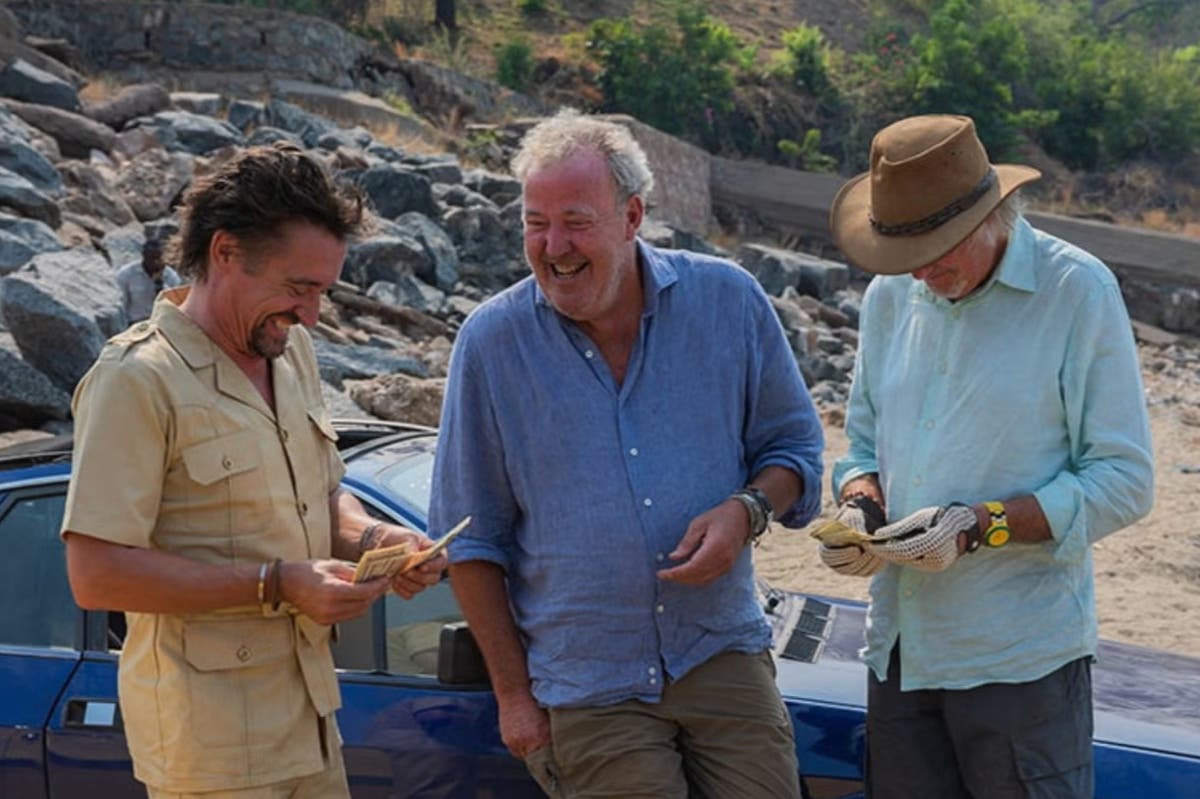To those with only a basic understanding of the United Kingdom – a land of pageantry, ancient history, and afternoon tea – the idea that a motoring show, hosted by three unglamorous middle-aged blokes, would be one of our most vital cultural exports might seem strange. But – first with Top Gear and now with The Grand Tour – the gouty trio of Jeremy Clarkson, James May and Richard Hammond have become global attachés for a form of shambling masculinity. As their Amazon motoring travel show comes to an end, can they send the format – which they invented – out with a bang?
The premise of One for the Road is simple: to drive the breadth of Zimbabwe in cars of their own choosing. Clarkson picks a Lancia Montecarlo, May a Triumph Stag, and Hammond a Ford Capri – and then they’re off. It is a journey that will take them through the bustling streets of Harare, over the crocodile-infested waters of Lake Kariba, and soon into Botswana. That is, to some extent, where the story started: the first Top Gear special that saw them rally across Africa. That was in 2007, and it served as a precursor to the globetrotting ambitions of The Grand Tour. “Zimbabwe has provided the perfect backdrop for our final motoring adventure,” Clarkson puts it, simply.
As the premises of their specials go, it’s a bit of a fudge. Cars they’ve “always wanted”, luxury hotels and a slow, meandering 600-mile journey across central Africa. The lack of structural urgency allows the finale to wheel out some old classics: a pontoon crossing of the world’s largest reservoir, a Frankensteined train sequence, and about half a dozen breakdowns. After all, half the joy of The Grand Tour has been watching the suspension on classic cars take a battering on the potholes and dirt tracks of the world. “There is a god,” Clarkson muses, as they reach something more discernible as “road”. “And God has provided tarmac.”
The absence of too many shenanigans (though the runtime is two hours and 10 minutes, it feels more compact than recent TGT specials) opens up plenty of time for sentimentality. Musing on his arrival at Top Gear decades ago, Hammond confesses that he “never dreamed it would grow into a career and life-defining adventure”. But unlike the group’s departure from the Beeb in 2015 – where the gossip columns were filled with speculation about who might pick up their contracts after the infamous “fracas” – this feels like a genuine closing of a chapter. Dire Straits’ “Brothers in Arms” soundtracks the final moments, where the hosts stumble up to a baobab tree they had visited 17 years earlier. Archive footage shows them in contrast – these always prematurely middle-aged men are now well-seasoned.
What remains is the question of The Grand Tour’s legacy. In a sea of generic celebrity travelogue shows, it was something distinct. Cars offered an opportunity for the show to shed light on capitalism’s colonialism of the 20th and 21st centuries. The empire of globalised consumerism, lit up in the headlights of an Opel Kadett. At times, The Grand Tour has been a bit incurious about the places it’s visited, transporting European and American cars to Africa or Asia or South America, and then gawping at the vistas without engaging with the local motoring culture. It feels like a missed opportunity to gild the show with some genuine anthropology, some real history. Instead, viewers are offered tongue-in-cheek aphorisms (like “If you absolutely must do African exploration, you absolutely must have a Lancia”) that say more about the presenters than the setting.
But, of course, the show is really about Clarkson, May and Hammond. The beauty of the landscape – cruising down a jacaranda-lined avenue in Harare, or emerging like Lawrence of Arabia through the haze of the salt flats – is secondary to the British (and, indeed, the international) public’s relationship with three oil-soaked ambassadors for the left-hand side. One for the Road might not have high drama or daredevil action, but it has plenty of the charismatic camaraderie that has turned this unlikely trio into televisual royalty.


